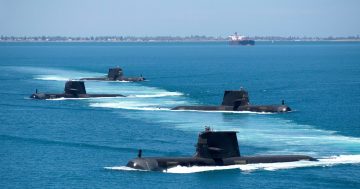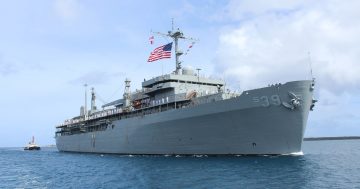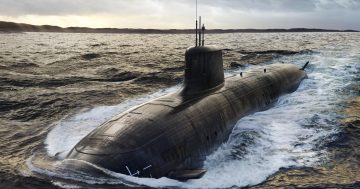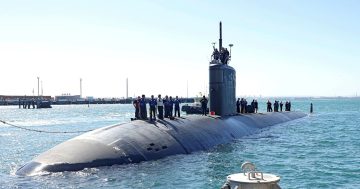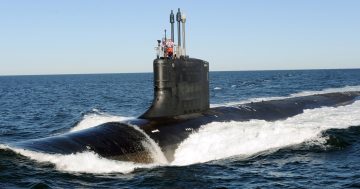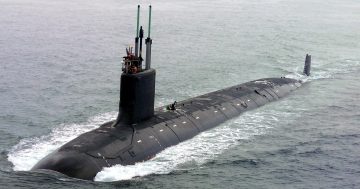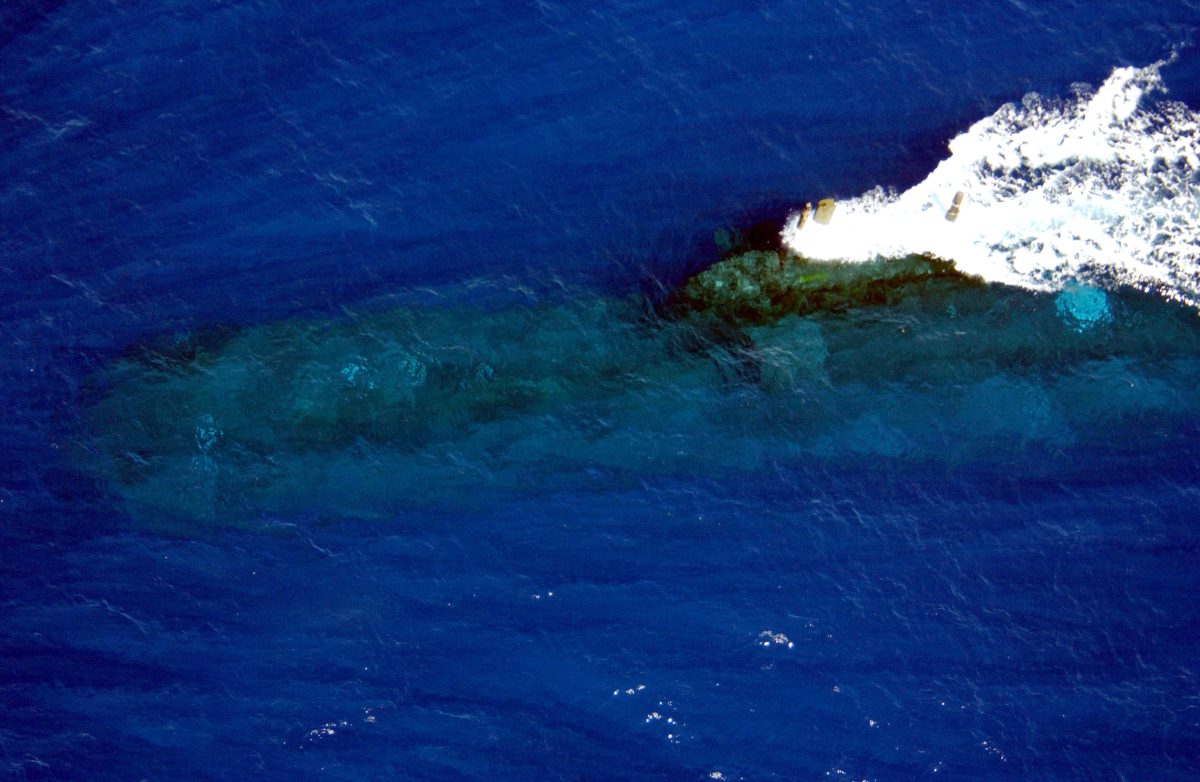
Australia’s Collins class submarine, HMAS Rankin (SSK 78) cruises out to sea at periscope depth. Photo: US Navy photographer David A Levy.
The 2021 decision to scrap a deal to buy conventional submarines of French origin and instead pursue the acquisition of US or British-designed nuclear-powered attack submarines under the AUKUS arrangement has resulted in a looming submarine capability gap.
The Royal Australian Navy currently operates six Collins class diesel electric submarines. The Collins design was selected in 1987, and the first of the new submarines – HMAS Collins – was launched in August 1993 and commissioned into service in 1996. The remaining five boats were built over the following decade, with the last – HMAS Rankin – being commissioned in March 2003, some three-and-a-half years behind schedule.
The Collins class had a difficult service entry, with the first boats being built with numerous faults including issues with the combat system, periscopes, fuel system, and excessive underwater noise. While most of these issues had been addressed by the time the fifth and sixth boat were commissioned, the first four required major rework. But since the fixes were implemented, the Collins class has been regarded as being one of the best conventional subs in service anywhere in the world.
The cancellation of the Collins’ replacement – the Attack class – in 2021 was a surprise to many. Based on a French nuclear-powered design, the Attack class was to be a hybrid design with a French hull, a combat system of US origin, and diesel electric engines. It was planned that all 12 Attack class boats would be built in Adelaide and, while the integration and manufacturing risk was high, the first boat was intended to be in the water by 2032.
But whereas diesel electric submarines have range and operational limitations due to their need to ‘snorkel’ by venting diesel exhaust gasses at the surface while recharging their batteries, nuclear-powered boats have no such limitations. In the case of the US Virginia class, they never need to be refuelled, and thus only need to surface in order to replenish rations or weapons. Nuclear boats are also larger, much faster, and much longer-ranging.
It was these factors that led Australia to go all-in with a nuclear boat through the AUKUS construct. But it was also this decision that has added about eight years to the schedule in which a new class of submarine could enter service, from 2032, to 2040 or beyond.
With HMAS Collins originally planned to be retired in 2026, there are three options to fill this gap.
The first – and most likely option – is to extend the Collins class out to the early 2040s which will require a $6 billion life-of-type extension (LOTE) comprising new engines, sensors, combat system, and more advanced weapons. This invasive program will take more than two years per vessel and is planned to run from 2025 to 2033, leaving the RAN with just three or four submarines available at any one time during this period.
The second option is to do all possible to fast-track the nuclear option. Because of the AUKUS tie-up, there are really just two nuclear options for Australia to acquire – the US Navy’s Virginia class, or the UK Royal Navy’s Astute class. But UK and US shipyards are already building new boats at near-maximum capacity. The US Navy can’t even build sufficient Virginia class subs to meet its own requirements, while the last of the UK’s Astute class subs is due to be completed in 2024.
Option three would be the acquisition of new conventional subs to fill the gap. There are several options available that, while not offering the capability of a nuclear boat nor sharing any commonality with Collins, would be comparatively cheap and quick to acquire. Submarine manufacturers in Sweden and South Korea have made representations to the Commonwealth to various degrees, and it has been reported that new boats could be available from 2028.
Interestingly, French President Emmanuel Macron reportedly offered to build four Scorpene class conventional subs as a gap-filler for Australia when he met with Prime Minister Anthony Albanese in Paris last month.
Defence Minister Richard Marles says the new Labor Government was still deciding how best to deal with the submarine gap, saying a decision on how best to proceed would be made by next March.
“There is a process that we are obviously going through in terms of working out exactly which option we pursue, trying to work out how soon we can get that option and understanding what capability gap might arise and how we might deal with that,” Marles told media on 7 July.
Whether this schedule has been affected by the Defence Strategic Review announced on 3 August remains to be seen.












